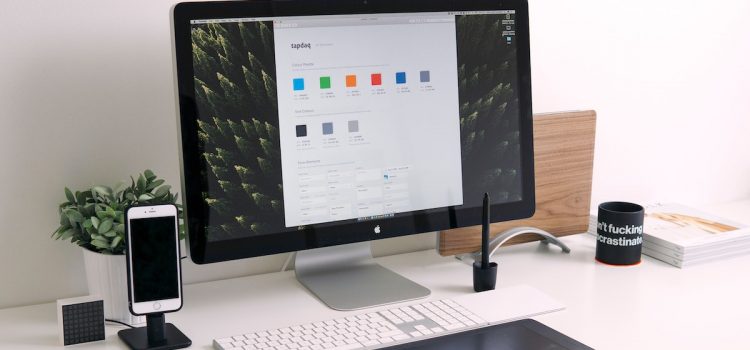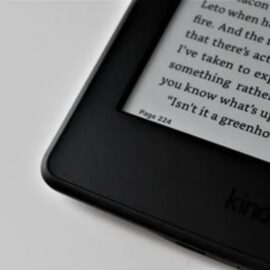

This article is an excerpt from the Shortform book guide to "User Friendly" by Cliff Kuang and Robert Fabricant. Shortform has the world's best summaries and analyses of books you should be reading.
Like this article? Sign up for a free trial here.
How has technology evolved over time? When did businesses start focusing on user-friendliness?
User-friendly design has been around longer than you think. According to User Friendly by Cliff Kuang and Robert Fabricant, ergonomic design first began in the 1920s and became popular during World War II.
Below we will take a look at the evolution of design over the years.
The Evolution of User-Friendly Design
Kuang and Fabricant trace the roots of the evolution of design, specifically user-friendly design, to three key historical periods: the rise of industrial design for household products during the 1920s, the increase in demand for user-friendly military devices during World War II, and the Silicon Valley technology boom starting in the 1970s.
The Birth of Industrial Design
Kuang and Fabricant write that the 1920s in the US was when manufacturers first showed a stronger interest in ergonomics, which emphasizes efficiency and ease of use rather than making decorative items without significant updates to their functionality. Women in the US had just gained the right to vote in 1919, and at the advent of what’s called first-wave feminism, there was suddenly a huge demand for kitchen gadgetry that would reduce the amount of time women had to spend doing domestic work.
This rising demand among women for useful household products linked business interests (the need to sell products and expand their market) with social progress and product design. During the Great Depression of the 1930s, the low income in the general population gave manufacturers even more incentive to make innovative products that would motivate people to buy non-essential items like an updated dishwasher.
(Shortform note: Economic research demonstrates the drastic changes that household products and appliances produced in domestic labor in the 20th century. One analysis shows that in 1900, the average household spent 58 hours per week on domestic chores like meal preparation and laundry. By 1975 that number dropped to only 18 hours per week as a result of labor-saving appliances like dishwashers and washing machines. Another study in the 1940s showed that study participants walked over 3,000 feet (measured with a pedometer) to do laundry by hand and only 333 feet to do laundry with electric appliances.)
World War II Stimulates User-Friendly Innovation
Kuang and Fabricant write that the next phase of user-friendly design stemmed from a new market demand during World War II: the need for complex machines that soldiers could operate in high-stakes conditions. The authors explain that when engineers developed new technologies like radars and fighter planes, they quickly realized that they needed to tailor the designs to human limitations. They had to make it as easy as possible for many different people to use the technology with minimal training. If it was easy for someone to accidentally push the wrong button while they were operating a machine, engineers started to think of this as a design error rather than a user error.
(Shortform note: In addition to making new devices user-friendly, engineers had other new design criteria to incorporate into the designs and manufacturing process for war equipment: Devices also had to be small and light for easier transport, rugged enough to withstand different weather conditions, and reliable enough to stake people’s lives on. During this era, manufacturers for automobiles, household products, and even children’s toys shifted their production to war technologies that had to meet these specific industry demands.)
Kuang and Fabricant assert that in this context, the user-friendly design elements discussed in the previous section (like the mental model and appropriate feedback) became an issue of life or death. People needed to be able to operate machines or fly a plane even in a high-stress combat scenario with plenty of distractions. The authors explain that it was important for people to understand whether a device was functioning well, and they needed consistency in things like control panel layouts and indicator colors so that the device’s operation was intuitive.
For example, a walkie-talkie radio should be easy to hold in one hand, and the press-to-talk mechanism to turn on the speaking microphone should be easy to reach and be located in the same place across devices. This simple design consideration enables people to quickly grab it, locate the button, and communicate without scrambling to find the right button and wasting precious time.
(Shortform: The medical device industry is another context where user-friendly qualities are critical. In biomedical engineering, designing for user-friendliness is often referred to as human factors engineering. In human factors engineering, the designers go beyond making sure the device is effective and accurate; they also look to reduce reliance on user manuals (to reduce the time required to use a device), reduce the risk of human error, create intuitive controls, and understand how both medical practitioners and patients will interact with the device. These factors accommodate the need to operate equipment quickly in urgent and high-stress situations.)
Silicon Valley Boom
Kuang and Fabricant write that the third major expansion of the user design industry occurred in a very different context: the rapid expansion of the tech industry in Silicon Valley in California during the 1970s and ’80s. During this period, engineers at IBM and Apple created the first user-friendly personal computers.
The authors explain that to make these devices accessible for the average user, designers drew on mental models in the physical world: the digital desktop—where you can lay out your work in front of you and see folders to organize digital files, the hand symbol to grab and select items, and the recycling bin or trash icon for deleting things. These metaphors, and other digital design elements like drop-down menus and windows, played a major role in shaping user-friendly technologies, and they’re ubiquitous to this day.
(Shortform note: Some people argue that although the desktop metaphor was critical for helping users figure out how to operate a computer for the first time, it has now become an outdated component of operating systems. For instance, some contend that the desktop metaphor encourages people to use the desktop screen as an inefficient dumping space for random files and results in messy hierarchies of file folders that can be difficult to remember and locate. Many researchers are working on alternative mental models for computer operation that combine AI capabilities with metaphors from other types of media such as books, movies, and video games.)

———End of Preview———
Like what you just read? Read the rest of the world's best book summary and analysis of Cliff Kuang and Robert Fabricant's "User Friendly" at Shortform.
Here's what you'll find in our full User Friendly summary:
- A look at the evolution of user-friendly design, from the 1920s to today
- How excessive user-friendliness is causing a technology addiction
- How user-friendliness can be used to reflect the values of customers instead






